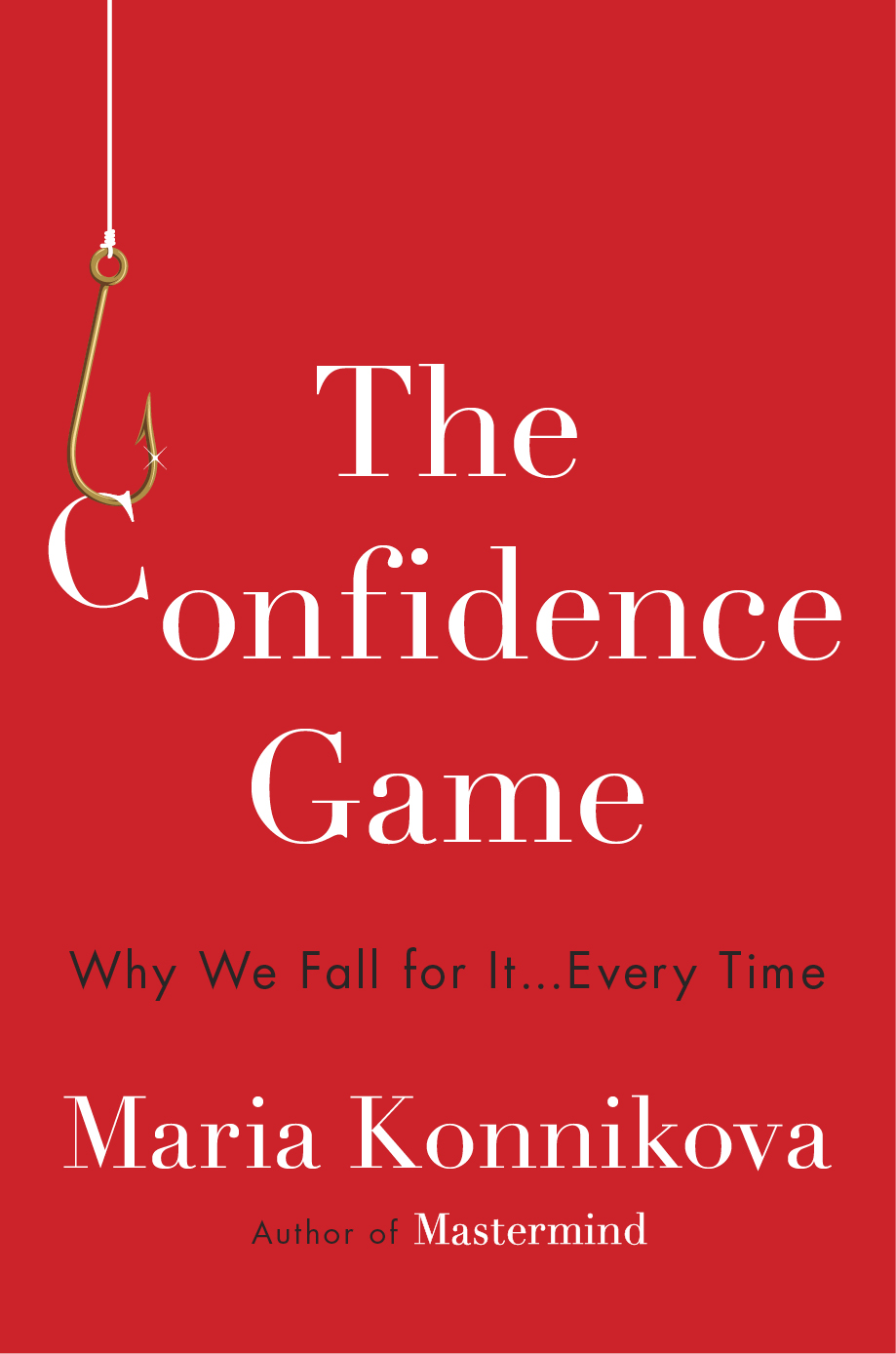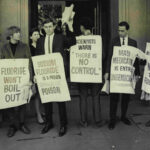A little over ten years ago, Rosemary Counter and her friend, Kate, found themselves playing a game that many early-twenties single women do on a slow evening: trolling the Craigslist Missed Connections to laugh at the absurd descriptions.
And then, they weren’t so funny any more. There, Kate read, aloud, look: Drake Hotel, slim, red hair and black satin top, dancing with friends. It was Rosemary. She’d been there. She was dressed like that. She had red hair. Surprised and charmed, Rosemary wrote back. She sent a picture. “It’s you! I can’t believe it’s really you!” came the reply.

What I Left Out is a recurring feature in which book authors are invited to share anecdotes and narratives that, for whatever reason, did not make it into the final manuscript. In this installment, Maria Konnikova mines the cutting room floor from her new book, “The Confidence Game.”
A whirlwind romance (of course) promptly followed. For ten days, they were inseparable. Gifts. Shows. Dinners. Rosemary extolled fate — “how brutally fickle chance could be. What if Kate hadn’t clicked on his ad that night? What if he had been too shy to post it?” And on and on. It was the force of the universe bringing them together despite the odds. Kate, however, wasn’t quite so charmed. There were, she felt, just a few red flags. Like the fact that Rosemary had never been invited to her new lover’s apartment even while he showered her with gifts. Rosemary thought she was just jealous, that, “Chance had favored me but not her, though I smugly assured her that someday that would change, if only she believed.”
Kate persisted. Finally, Rosemary gave Prince Charming an inquisitive call. Was there anything he wasn’t telling her? As it so happened, there was. He was married. One kid, and one on the way. His wife was simply out of town. Oh, and that ad? He’d never even been to the Drake Hotel. He just had a thing for redheads. “I chose you.” Even after the unmasking, her Romeo persisted in insisting that this really was something incredible, rather than what it actually was: one big scam.
It’s really quite a brilliant creation of the con artist’s mind, a Craigslist ad like that. The probability of finding your true love on Missed Connections: fairly low. But the probability of some redhead wearing black at a hotel with friends on a Friday night: practically certain. And the likelihood that she will recognize herself and see it as fate rather than statistical inevitability: also incredibly high.
“Chance hadn’t favored me; it had targeted me, tapping something in me that was dormant but susceptible to romantic delusion,” Counter wrote in the New York Times as she sadly recounted her tale. “We were all hoping love wouldn’t miss us. We were all eager to believe that love, for us, was meant to be.”
She was the con artist’s perfect prey; and chance, the perfect lure.
The word con stands for the confidence game: you willingly give your confidence, or trust, to someone else — a someone who then abuses that confidence for personal ends. But one of the reasons it works so well is that it also plays on the way in which we interpret coincidence. Or, rather, it takes advantage of our seeming inability to dismiss something improbable as purely coincidental — and instead, our insistence on creating intent and meaning even where, objectively, it may well be absent.
Like Rosemary, we find it incredibly difficult to accept that coincidence is nothing but. We want to ascribe to it some meaning. It can’t be chance. It must mean something. That insistence is, in act, a psychological tendency as common as it is problematic.
To Sir Ronald Aylmer Fisher, a 20th century statistician and geneticist who devoted much time to the proper design of experiments, the human tendency to spot spurious connections was a central problem even in research – to be flagged, noted, and avoided. “The ‘one chance in a million’ will undoubtedly occur,” he wrote in his 1935 book, “The Design of Experiments,” “with no less and no more than its appropriate frequency, however surprised we may be that it should occur to us.” With millions upon millions of people currently alive, one chance in a million becomes fairly high fairly quickly.
And yet, while we know this theoretically, while all of us are capable of reading and understanding Fisher’s logic, when it does happen to us, the counter-urge — to see deeper meaning rather than coincidence, to see, as Counter did, the hand of fate — can be overwhelming. We simply cannot accept that things just happen, and that their “just happening” can just happen without any good reason. We especially cannot accept it, as psychologist Ruma Falk pointed out over a decade of research, when it happens to us, in our own lives — particularly when the coincidence seems to be, somehow, a meaningful one, confirming some large force that we just know exists. True love, fate, karma, whatever we call it: when it happens to others, we are capable of rational skepticism; when it happens to us, wishful thinking often wins out. For isn’t it far more pleasant than the cold rationality of that shudder-inducing word, “statistics”?
Still, in 1989, Persi Diaconis and Frederick Mosteller, Harvard University mathematicians both, formulated a theory of coincidence based on just such chilly math, methodically investigating the question of what “chance” really means. As an example, when we meet a group of people, we can, and inevitably will, experience a number of coincidences. Jobs, names, birthdates, hometowns, hobbies, and the like. The chance of such coincidences, it turns out, is remarkably high. For instance, for the famous birthday problem — the chance that two people will share the same birthday — you need a mere 23 individuals for the chance to hit 50-50. If you have a group of 48, your likelihood of success jumps to 95 percent. For a triple-hit, the magic number is still quite low, at 88. Quadruple: 187. And if you want birthdays that are within a day — something many of us will still see as quite the coincidence, all you need is 14 people. Even as low as seven, you have a 50-50 chance of hitting a within-a-week match.
Yes, you might say, but unlike a Craigslist connection, nobody would ever really say that’s incredible; rather, it would appear simply a fun fact. But humanity is a large enough number — and even subsets of it, say, the residents of a state or city are large enough numbers — that almost anything becomes possible, and some things are harder to dismiss than a shared birthday. Diaconis and Mosteller point to a then-recent headline in the New York Times: a “1 in 17 trillion” long shot of a woman who won the New Jersey lottery not once, but twice. It’s a coincidence so seemingly incredible that one almost can’t help but see the hovering hand of fate.
And yet, as Diaconis and Mosteller point out, that 1-in-17 trillion is not the relevant number. It is, rather, the chance that if one person purchased exactly two tickets at the same time, for different lotteries, they would both be winners. Not only did the New Jersey winner purchase multiple tickets for multiple lotteries multiple times, but the relevant question isn’t even that. It is rather: what’s the likelihood that, out of all the millions of people buying lottery tickets in the U.S., one will hit the jackpot twice in her life? Ends up, it’s “practically a sure thing,” within a seven year period. And within four months, the time between the two wins in this particular case? Better than one in 30 — or rather respectable odds when it comes to lotteries. “With a large enough sample,” Diaconis and Mosteller write, “any outrageous thing is likely to happen.”
Someone will seem telepathic. Someone will win the lottery twice. Someone will find a dream lover online. “In a culture like ours based heavily on determinism and causation, we tend to look for causes, and we ask, ‘What is the synchronous force creating all of these coincidences?’” Diaconis and Mosteller conclude. “We could equally well be looking for the stimuli that are driving so many people to look for the synchronous force. The coincidences are what drive us. And the world’s activity and our labeling of events generates the coincidences.”
Which means that even though all of this rational explanation may make perfect intellectual sense, we struggle to embrace that statistical certainty, even with those wonderfully convincing numbers staring us in the face. No, we yet counter. It’s the golden touch of luck. It’s fate. It couldn’t have happened by chance. It’s kismet. It’s the magic chance of being just the right redhead on Craigslist Missed Connections. It would seem we are fated to believe in fate — and that’s a faith that will provide endless fuel to the con artists among us.
Maria Konnikova is a contributor to newyorker.com, where she writes regularly on psychology and science.










